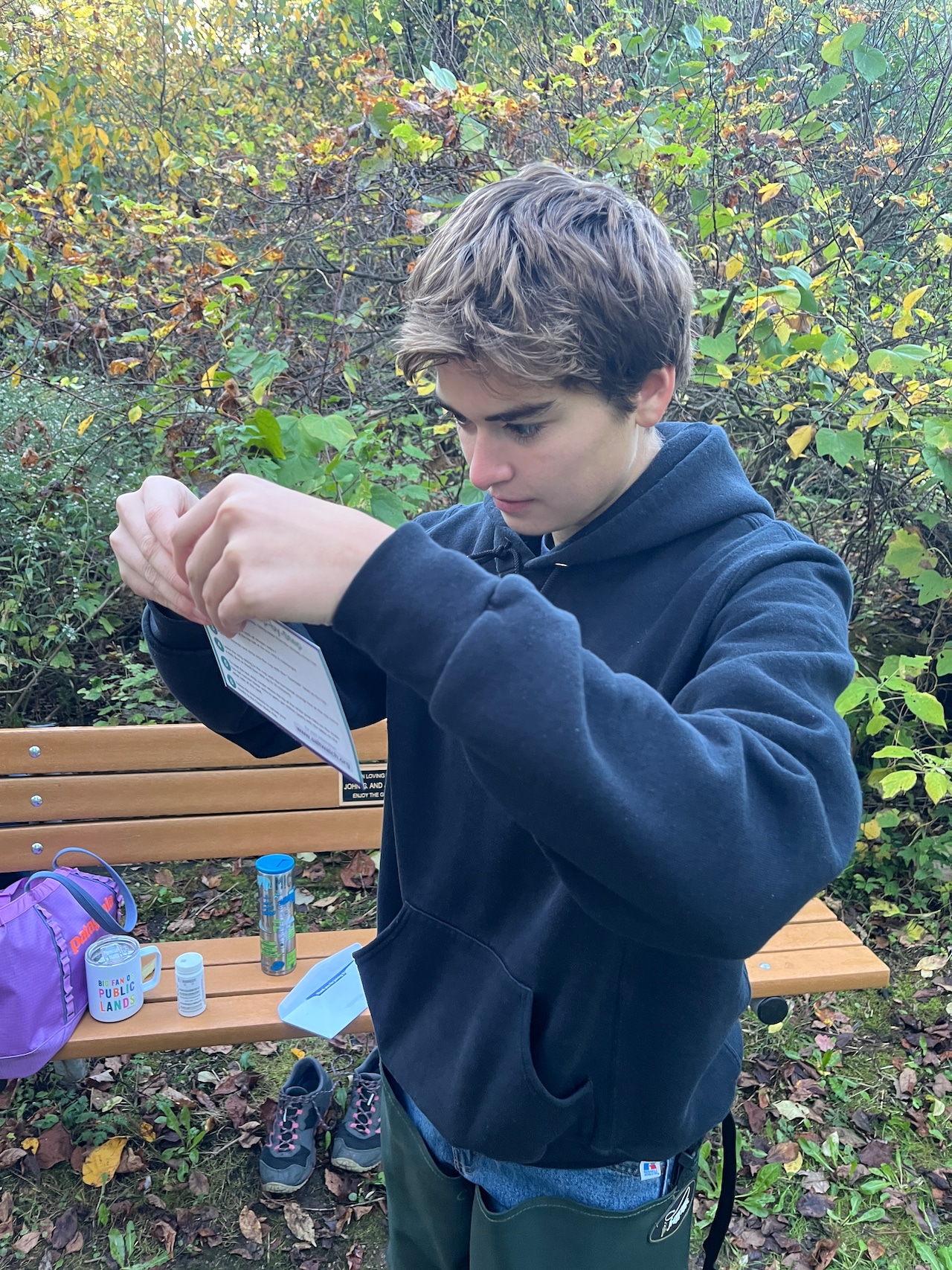Copyright M Live Michigan

OTTAWA COUNTY, MI - West Michigan students in environmental classes have teamed up with Ottawa County on a “citizen science project” aimed at discovering where road salt is being overused along the Pigeon River watershed. The students are part of an environmental field studies program held at the Ottawa Area Intermediate School District’s (OAISD) Careerline Tech Center (CTC), which helps prepare high schoolers for the workforce. They are now working with the Ottawa County Conservation District. According to a June 2024 article published by Michigan State University Extension, road salt - also known as sodium chloride - is used to reduce the melting point of water, which helps keep ice off the roads when temperatures drop below freezing. The practice has been used since the 1940s. But it can come with an environmental cost when that road salt runs off and leaches into freshwater systems, making freshwater lakes, rivers and groundwater saltier over time. Chloride, which makes up around 60% of road salt, is a detrimental pollutant in excess. It can be toxic to fish, aquatic plants and insects, amphibians, zooplankton and algae. It can also change the density of freshwater, creating buildup in the deepest part of lakes and preventing them from mixing naturally. The university advises limiting salt use and attempting to remove snow and ice manually whenever possible. Sarah Bowman, an Ottawa County watershed and conservation specialist, said the students are collecting data to help the county better understand locations where road salt is being overused and could seep into the nearby Pigeon River. “Thanks to the work of these students, we can help provide targeted outreach to those residents to use the proper amount of salt during the winter,” Bowman said, “protect(ing) the water quality of the Pigeon River and perhaps the entire watershed by not oversalting.” The main branch of the Pigeon River is around 12 miles long and flows to Lake Michigan, running through a generally rural area that includes three townships between the cities of Holland and Grand Haven. For the Pigeon River research, CTC instructor Avril Wiers said her first-year students have so far spent their time exploring the river, collecting water bugs to determine the health of the surrounding area and cataloging different species at Pigeon Creek Park. They’ll begin collecting water quality data on the river come spring, comparing that to another collection period done by students last year. In the meantime, “we’re hoping that raising awareness of road salt pollution this winter will mean that we see less chloride pollution compared to last year’s numbers,” she said. Raising awareness included presenting student research to West Michigan volunteers, which several students did on Sunday, Nov. 2 at the Nature Education Center at Hemlock Crossing County Park in West Olive Holland High School senior Mads Christensen presented an independent project on the effects of road salt on plant growth, subjecting seedlings to varying concentrations during the research period. Wiers said images taken during the course of the research illustrated changes in the growth and vitality of plants at different chloride levels. Annabelle Boyd and Ryan Gonzales, seniors at Black River Public Schools, also conducted research on the effects of salt concentrations on microscopic water fleas, known as moina. Boyd said “presenting research to the public, promoting citizen science efforts, designing scientific experiments and performing research are all crucial skills for my future career as a scientist.” Students also distributed “salt watch” test kits to participants, who could use them to do their own water quality testing along the river. Wiers said in addition to helping improve water quality, the partnership with the county is designed to prepare students for careers in environmental science. “Students can prepare for college classes by engaging in the scientific method through designing experiments, collecting data in field and laboratory settings and analyzing and reporting results,” Wiers said. “Thanks to community partnerships, these students are better prepared for their future and are helping the environment in the process.” She said students have to meet rigorous standards to participate in the program. Last year, Christensen, Boyd and Gonzales collected data on pollution in the river, and wanted to take further action this year to help. Wiers added that upon successful completion of the program, students can earn six direct credits from Grand Valley State University.



